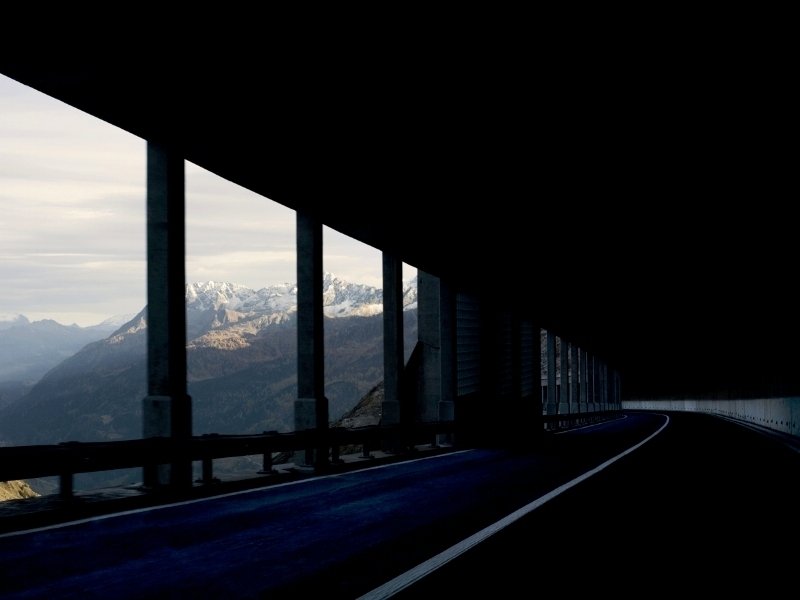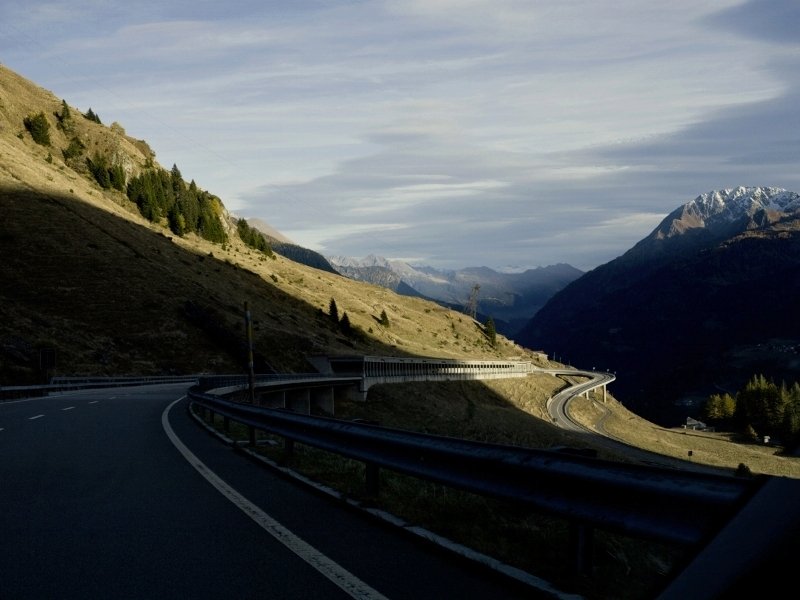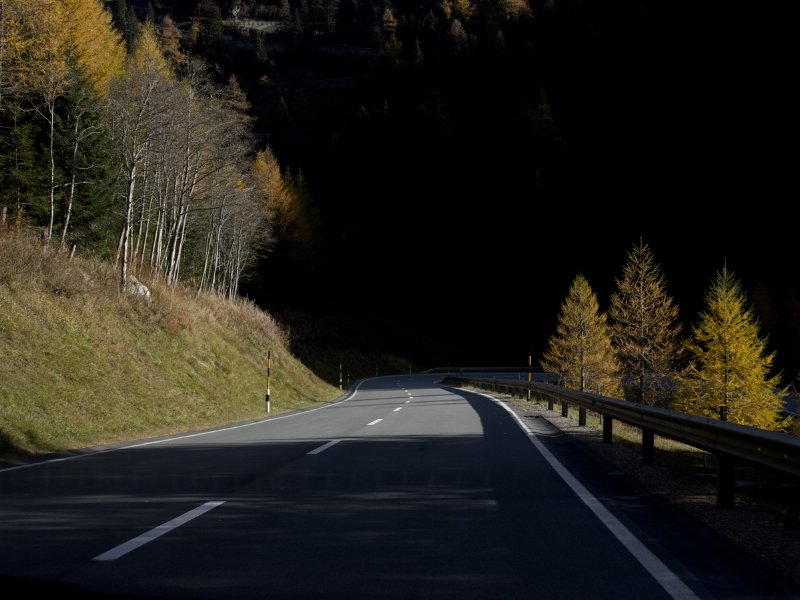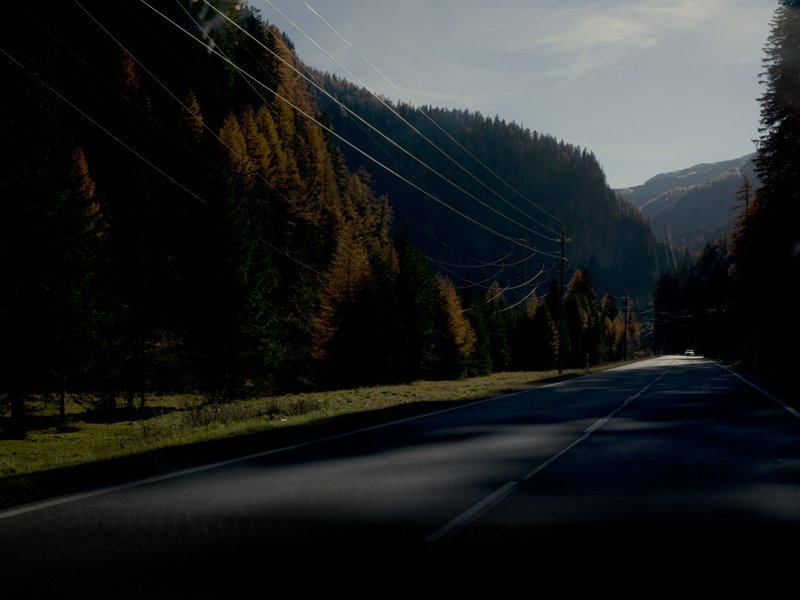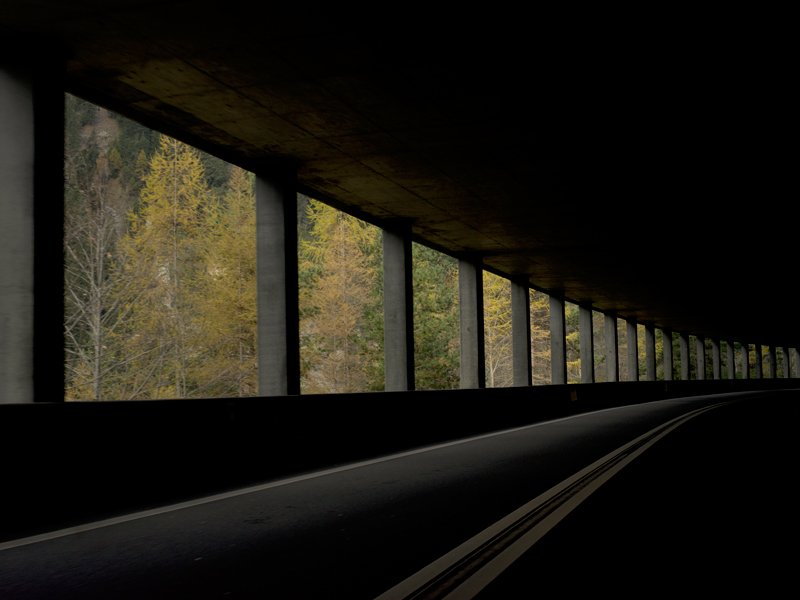Concealed Between Interior And Exterior | Rehovot Municipal Gallery - Smilenski Culture Center (Group Exhibition, Catalogue).
Text by curator and gallery manager Ora Kraus.
Lior Herchkovitz presents a selection of photographs created in Switzerland. He speaks of his intuitive process while working on this project, which is based on photographs taken from a moving car. Herchkovitz turns to the expanse of open landscape and creates photographs that seemingly function as concrete, realist images, while in fact reflecting hidden layers of the unconscious and the soul. As Susan Sontag writes in her book On Photography (1973): "All that photography's program of realism actually implies is the belief that reality is hidden. And, being hidden, is something to be unveiled. Whatever the camera records is a disclosure order that natural vision is incapable of perceiving..."In this context, one could say that Herchkovitz engages in a process of discovery in which the observation of reality reveals a new layer that is not perceived by our regular, everyday gaze.
Herchkovitz describes how the shadows are enhanced and overtake the photograph, alongside the presence of a large explosion of light that appears distant, almost unattainable, as his camera is directed towards the horizon. In this manner, he explains, the image enhances "the metaphysical transition from one place to another, to the unknown". The transition from one sphere to another gives rise to especially charged areas that seem to be suspended in the space between matter and spirit – between what appears to the eye and inner experience. The result is a landscape pervaded by an underlying mystical quality, a dimension of secrecy. Speaking of secrecy, Sontag quotes the American photographer Diane Arbus: "A photograph is a secret about a secret. The more it tells you the less you know." Indeed, as one continues to explore the mystical, secret dimension of Herchkovitz's photographs, their enigmatic quality seems to deepen. It should also be noted that Herchkovitz is influenced by cinema and that his landscape photographs call to mind, among other things, the impressive and terrifying landscapes in the opening part of Stanley Kubrick's film The Shining (1980).
The photograph Road VII (Tunnel II) Switzerland (2016) features a massive tunnel in a dark landscape with mountaintops in a range of grays. The concrete pillars at the side of the tunnel seem to form rectangular windows, through which one observes the mountains. The photograph was taken in motion, which is underscored by the swerving road. The shadows of the concrete pillars visible on the road create a stark contrast between the illuminated pillars and the dark parts of the photograph.
Road XII (Tunnel III) Switzerland (2016) was also photographed from within a tunnel from a moving car. To the left, among the pillars, there appears a landscape of trees - some green and others in autumnal shades of gold or brownish-gray. The photograph underscores the contrast between the dark tunnel and the landscape of trees revealed through the apertures among the pillars, which resemble large windows. The stark difference between the autumnal forest colors on the exterior and the black interior creates an intriguing chromatic harmony.
In another work, Road II (White Car) Switzerland (2016), one can observe a fragment of a mountain landscape and an alley of trees on either side of the road leading towards the unknown. Above, suspended between sky and earth, is a network of electric cables. Facing the viewer at the road’s dark vanishing point is a white car. The road is covered with patches of light that meld with the shadows of the trees that line it. This is a surreal, enigmatic and threatening scene. The car, whose presence provokes a sense of uncertainty, seems to be approaching the viewer as if about to hit him. The threat awakens our curiosity together with an intensive focus on the car and on the enigmatic absence of a human figure.
Please click here to view the full series
Please click here to view the full Catalogue (Hebrew, English)
